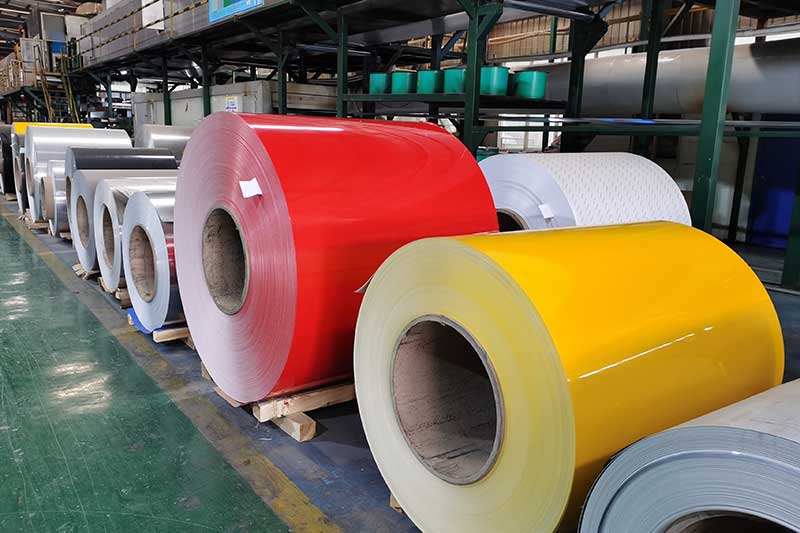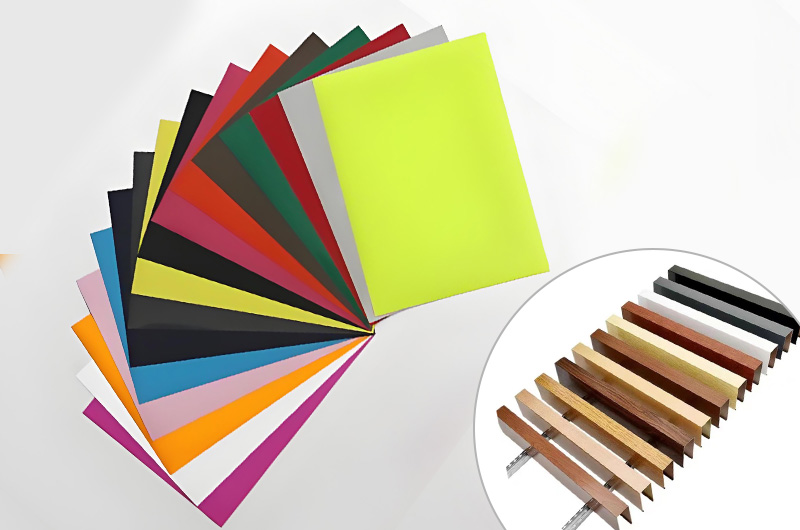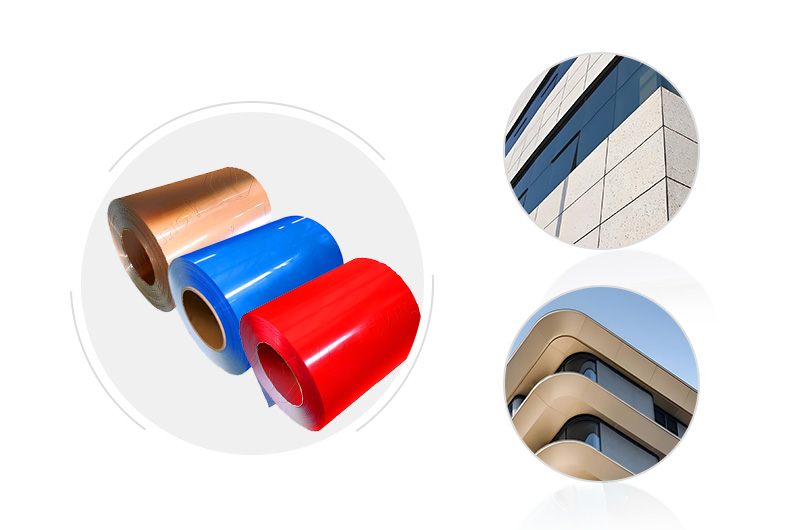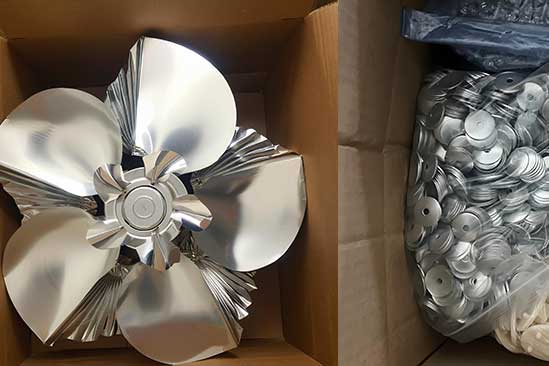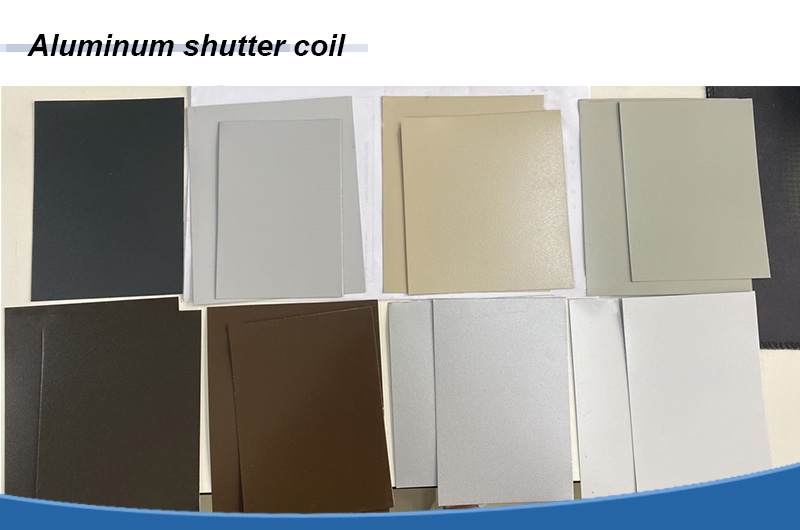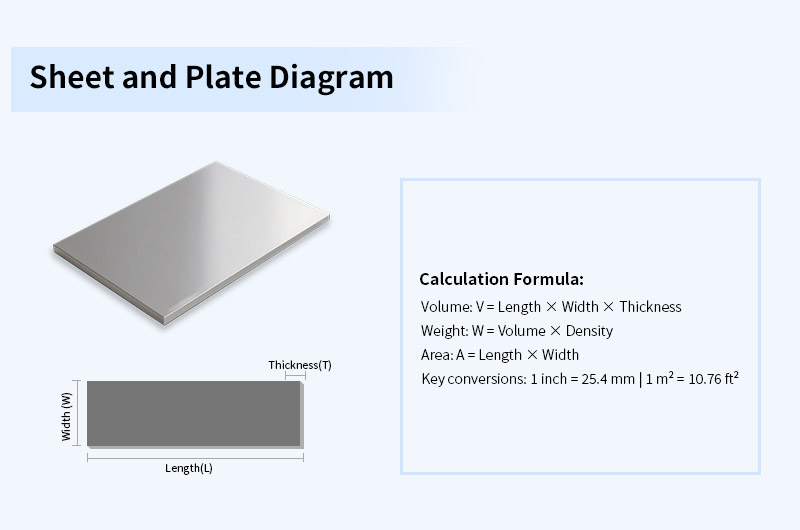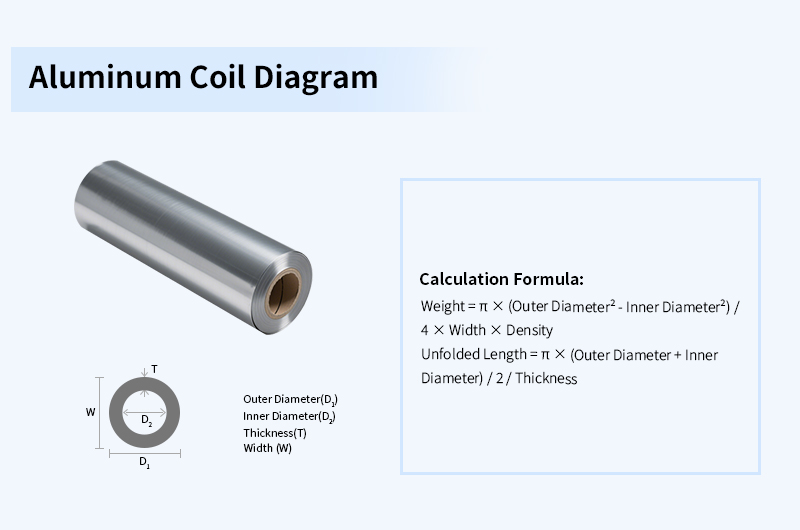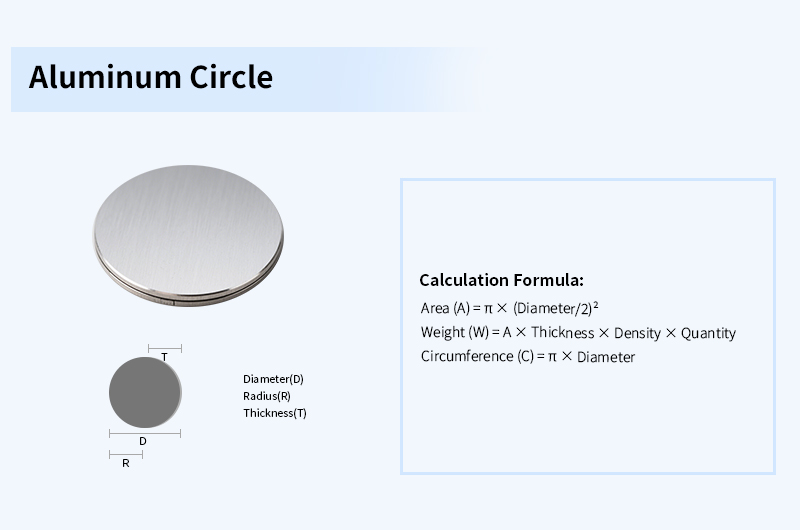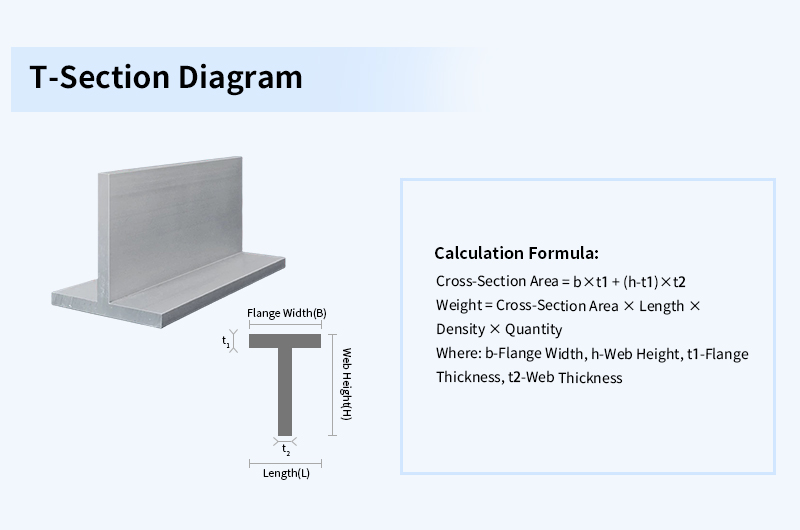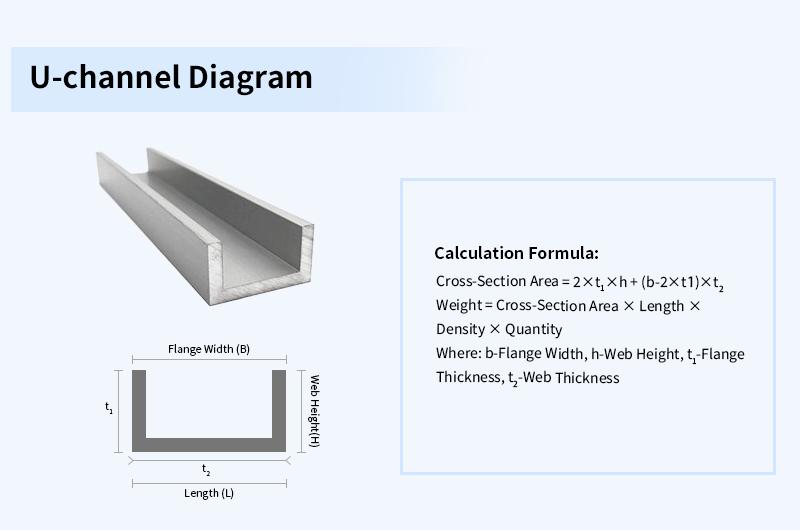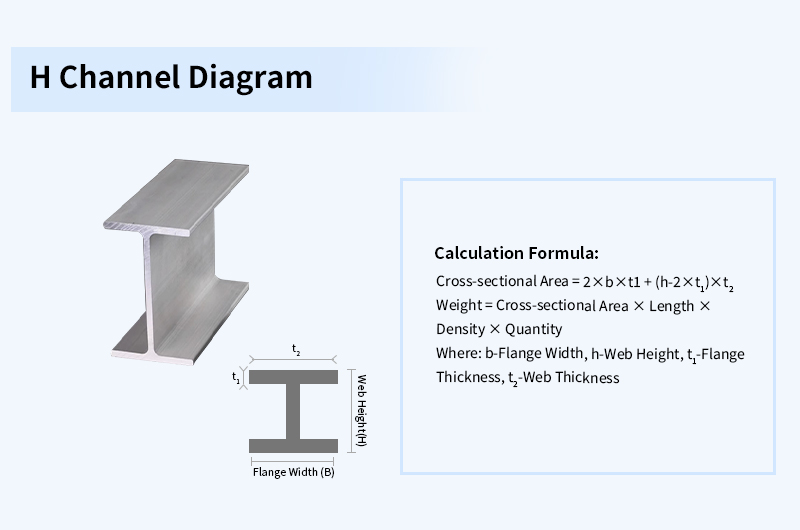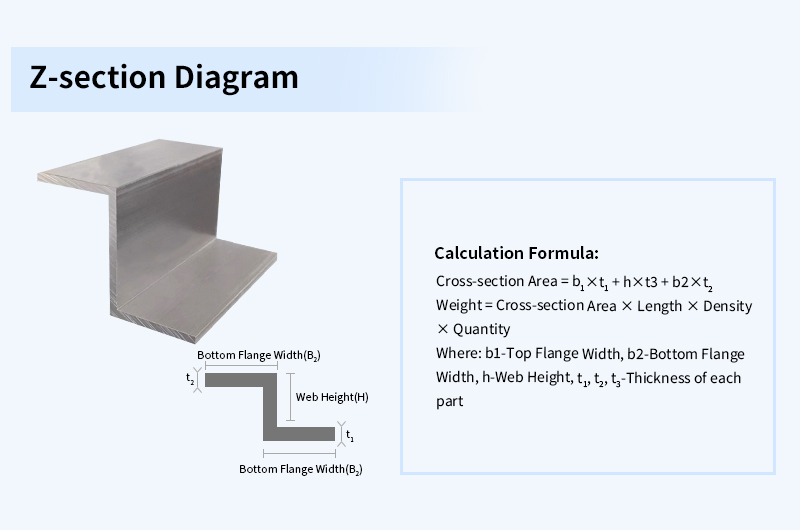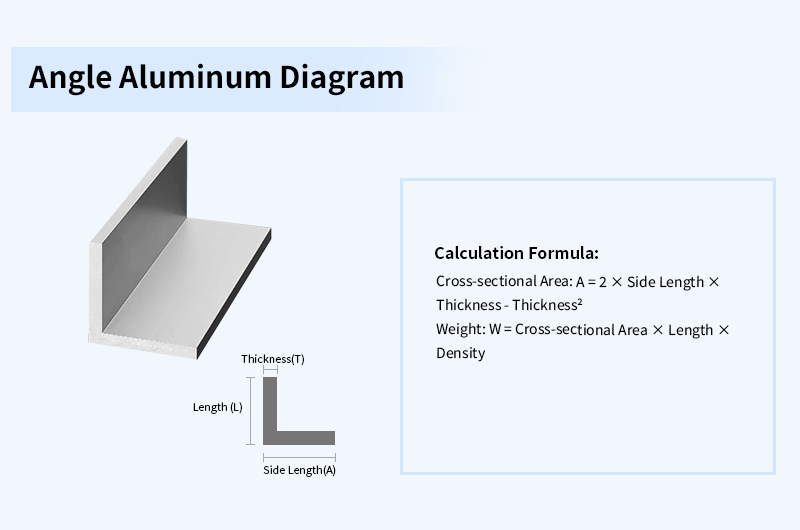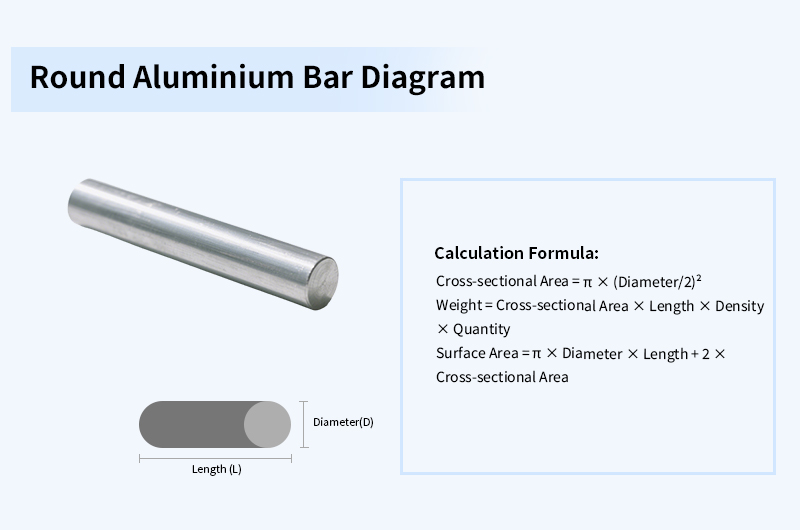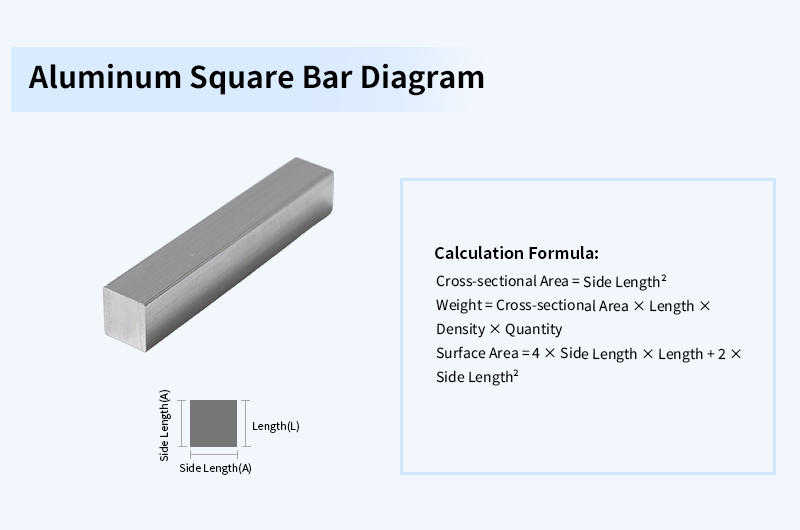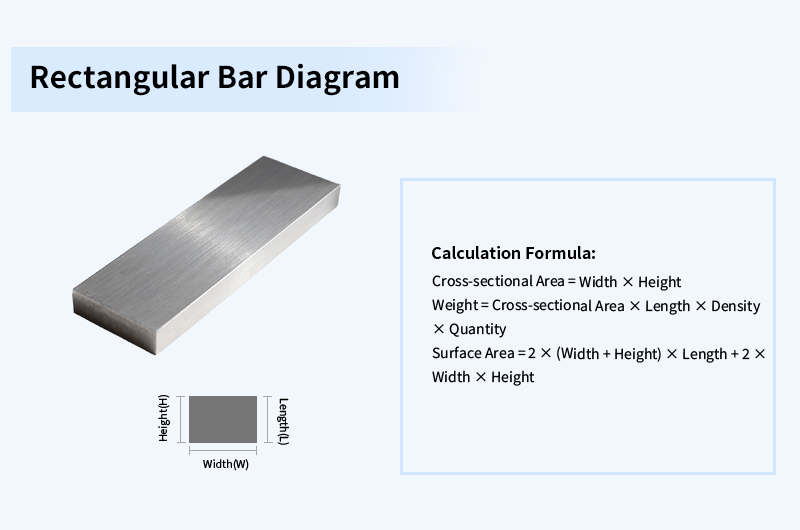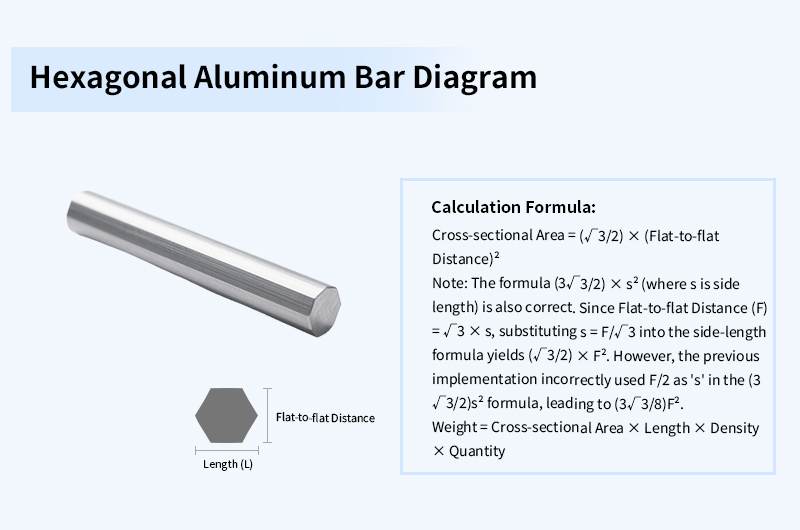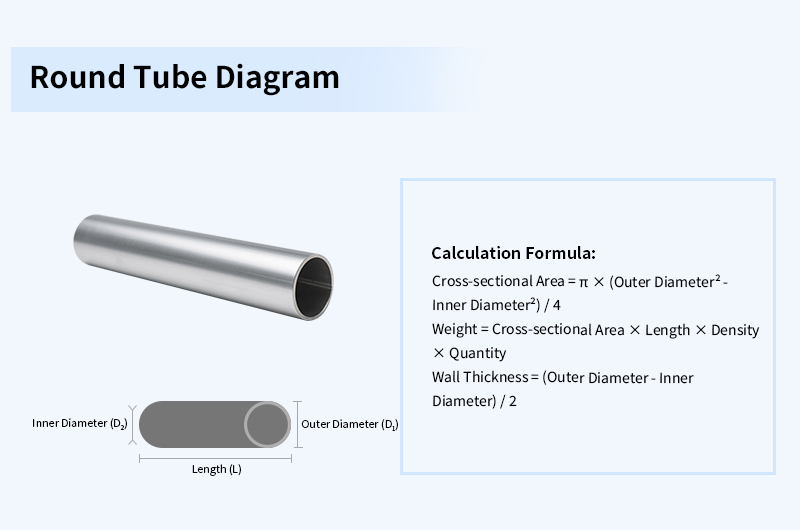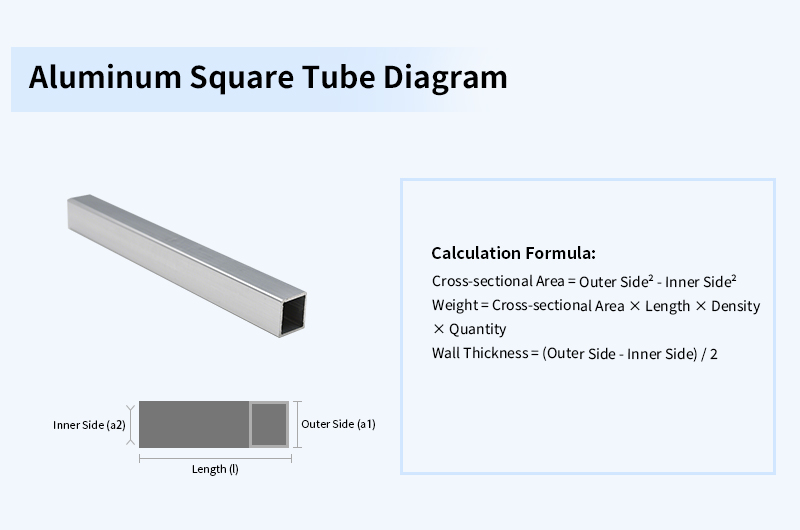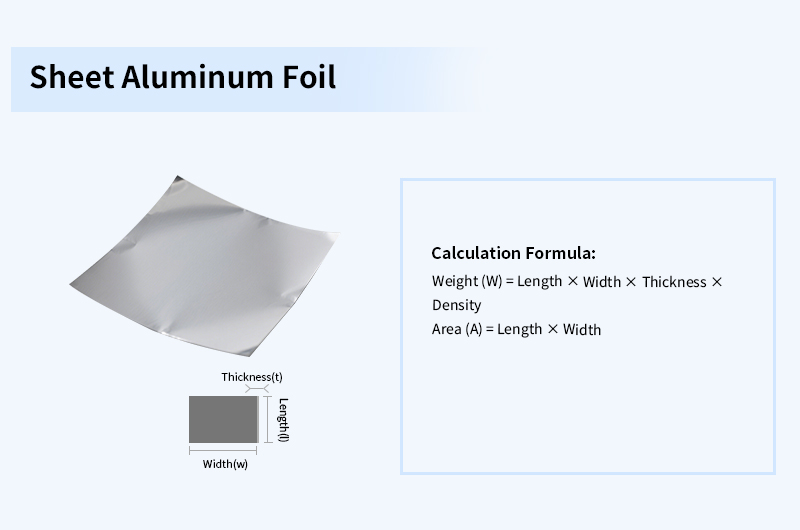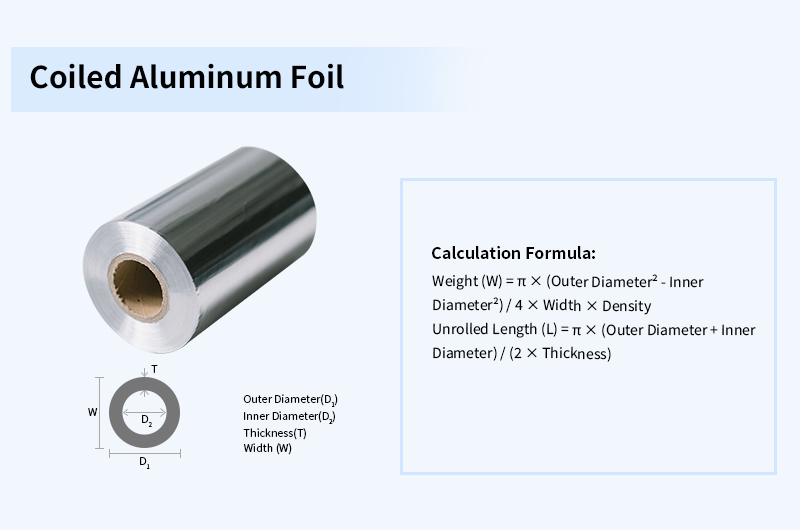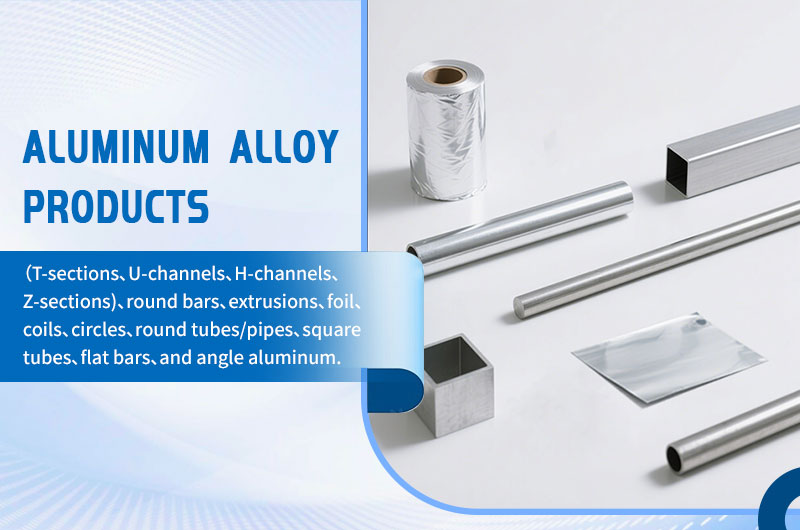How to Calculate Weight of Aluminium?
This guide provides a detailed explanation of how to calculate the weight of various aluminum alloy products, including profiles (T-sections, U-channels, H-channels, Z-sections), round bars, extrusions, foil, coils, circles, round tubes/pipes, square tubes, flat bars, and angle aluminum.
We will also demonstrate how to use the Worthwill Aluminum Weight Calculator and reference the density values from the density of aluminium.
Understanding Aluminum Alloy Density
Before diving into weight calculations, it is essential to understand the density of aluminum alloys. Density is defined as mass per unit volume and is typically expressed in g/cm³ or kg/m³. The density of aluminum alloys varies depending on alloying elements, heat treatment, processing methods, and microstructure.
Common aluminum alloy density values can be found in the density of aluminium, which provides data for various international standards such as German (DIN), American (AA), British (BS), European (EN), and International (ISO).
Aluminum Plate Weight Calculation
Calculation Formulas:
- Volume (V)= Length × Width × Thickness
- Weight (W)= Volume × Density
- Area (A)= Length × Width
Example:
Assume an aluminum plate with the following dimensions:
- Length = 2000 mm
- Width = 1000 mm
- Thickness = 5 mm
- Alloy density = 2.7 g/cm³ (2700 kg/m³)
Calculations:
- Volume (V)= 2000 × 1000 × 5 = 10, 000, 000 mm³ = 10, 000 cm³
- Weight (W)= 10, 000 × 2.7 = 27, 000 g = 27 kg
Note:This calculation method applies to all flat and smooth aluminum products, such as sheet aluminum foil weight calculations.
Aluminum Coil Weight Calculation
Calculation Formulas:
- Weight (W)= π × (Outer Diameter² - Inner Diameter²) / 4 × Width × Density
- Unrolled Length (L)= π × (Outer Diameter² - Inner Diameter²) / (4 × Thickness)
Example:
An aluminum coil with the following specifications:
- Outer Diameter = 1000 mm
- Inner Diameter = 500 mm
- Width = 1000 mm
- Thickness = 0.5 mm
- Density = 2.7 g/cm³
Calculations:
- Weight (W)= π × (1000² - 500²) / 4 × 1000 × 2.7 ≈ 1590.4 kg
- Unrolled Length (L)= π × (1000² - 500²) / (4 × 0.5) ≈ 1178.1 m
Note:This calculation method applies to all coiled and smooth aluminum products, such as coiled aluminum foil weight calculations.
Aluminum Circle Weight Calculation
Aluminum circles are commonly used for further processing into circular blanks.
Calculation Formulas:
- Area (A)= π × (Diameter/2)²
- Weight (W)= A × Thickness × Density × Quantity
- Circumference (C)= π × Diameter
Example:
- Diameter = 300 mm
- Thickness = 5 mm
- Density = 2.7 g/cm³
- Quantity = 1
Calculations:
- Area (A)≈ 706.8583 cm²
- Weight (W)≈ 0.954 kg
- Circumference (C)≈ 942.48 mm
Aluminum Profile Weight Calculation
Aluminum profiles come in various shapes, such as T-sections, U-channels, H-channels, and Z-sections, each with unique cross-sectional geometries.
T-Section Weight Calculation
Calculation Formula:
- Cross-Sectional Area (A)= Flange Width (b) × Flange Thickness (t₁) + (Web Height (h) - t₁)×Web Thickness (t₂)
- Weight (W)= A × Length × Density × Quantity
Example:
- b = 100 mm
- h = 200 mm
- t₁= 10 mm
- t₂= 8 mm
- Length = 3000 mm
- Density = 2.7 g/cm³
- Quantity = 1
Calculations:
- Cross-Sectional Area (A)= 100 × 10 + (200 - 10) × 8 = 2520 mm² = 25.2 cm²
- Weight (W)= 25.2 × 3000 × 2.7 × 1 = 20.41 kg
U-Channel Weight Calculation
Calculation Formula:
- Cross-Sectional Area (A)= 2 × t₁×h + (b - 2×t₁)×t₂
- Weight (W)= A × Length × Density × Quantity
Example:
- b = 120 mm
- h = 250 mm
- t₁= 8 mm
- t₂= 6 mm
- Length = 4000 mm
- Density = 2.7 g/cm³
- Quantity = 1
Calculations:
- Cross-Sectional Area (A)= 2 × 8 × 250 + (120 - 2 × 8) × 6 = 46.24 cm²
- Weight (W)= 46.24 cm² × 4000 × 2.7 × 1 = 49.94 kg
H-Channel Weight Calculation
Calculation Formula:
- Cross-Sectional Area (A)= 2 × b × t₁+ (h - 2×t₁)×t₂
- Weight (W)= A × Length × Density × Quantity
Example:
- b = 150 mm
- h = 300 mm
- t₁= 12 mm
- t₂= 10 mm
- Length = 5000 mm
- Density = 2.7 g/cm³
- Quantity = 1
Calculations:
- Cross-Sectional Area (A)= 2 × 150 × 12 + (300 - 2 × 12) × 10 = 63.6 cm²
- Weight (W)= 63.6 × 5000 × 2.7 × 1 = 85.86 kg
Z-Section Weight Calculation
Calculation Formula:
- Cross-Sectional Area (A)= Top Flange Width (b₁)×t₁+ Web Height (h)×t₃+ Bottom Flange Width (b₂)×t₂
- Weight (W)= A × Length × Density × Quantity
Example:
- b₁= 100 mm
- b₂= 120 mm
- h = 200 mm
- t₁= 8 mm
- t₂= 10 mm
- t₃= 6 mm
- Length = 3500 mm
- Density = 2.7 g/cm³
- Quantity = 1
Calculations:
- Cross-Sectional Area (A)= 100 × 8 + 200 × 6 + 120 × 10 = 3200 mm² = 32 cm²
- Weight (W)= 32 cm² × 350cm × 2.7g/cm³ × 1 = 30240 g = 30.24kg
Angle Aluminum Weight Calculation
Angle aluminum (L-shaped aluminum) consists of two perpendicular legs forming an L-shape.
Calculation Formula:
- Cross-Sectional Area (A)= 2 × Leg Length × Thickness - Thickness²
- Weight (W)= A × Length × Density × Quantity
Example:
- Leg Length = 50 mm
- Thickness = 5 mm
- Length = 3000 mm
- Density = 2.7 g/cm³
- Quantity = 10
Calculations:
- Cross-Sectional Area (A)= 2 × 50 × 5 - 5² = 475 mm² = 4.75 cm²
- Weight (W)= 4.75 × 300 × 2.7 × 10 = 38.48 kg
Aluminum Bar Weight Calculation
Aluminum bars come in various shapes, including round bars, square bars, rectangular bars, and hexagonal bars, each requiring different calculation formulas.
Round Bar Weight Calculation
Calculation Formula:
- Cross-Sectional Area (A)= π × (Diameter/2)²
- Weight (W)= A × Length × Density × Quantity
- Surface Area (S)= π × Diameter × Length + 2 × A
Example:
- Diameter = 50 mm
- Length = 2000 mm
- Density = 2.7 g/cm³
- Quantity = 1
Calculations:
- Cross-Sectional Area (A)= π × (50/2)² ≈ 19.635 cm²
- Weight (W)= 19.635 × 200 × 2.7 × 1 ≈ 10.6 kg
- Surface Area (S)= π × 50 × 200 + 2 × 19.635 ≈ 3181.63 cm²
Square Bar Weight Calculation
Calculation Formula:
- Cross-Sectional Area (A)= Side Length²
- Weight (W)= A × Length × Density × Quantity
- Surface Area (S)= 4 × Side Length × Length + 2 × Side Length²
Example:
- Side Length = 40 mm
- Length = 2500 mm
- Density = 2.7 g/cm³
- Quantity = 1
Calculations:
- Cross-Sectional Area (A)= 40 × 40 = 1600 mm² = 16 cm²
- Weight (W)= 16 × 250 × 2.7 × 1 = 10.8 kg
- Surface Area (S)= 4 × 40 × 2500 + 2 × 40 × 40 = 4032 cm²
Rectangular Bar Weight Calculation
Calculation Formula:
- Cross-Sectional Area (A)= Width × Height
- Weight (W)= A × Length × Density × Quantity
- Surface Area (S)= 2 × (Width + Height) × Length + 2 × Width × Height
Example:
- Width = 30 mm
- Height = 50 mm
- Length = 3000 mm
- Density = 2.7 g/cm³
- Quantity = 1
Calculations:
- Cross-Sectional Area (A)= 30 × 50 = 1500 mm² = 15 cm²
- Weight (W)= 15 × 300 × 2.7 × 1 = 12.15 kg
- Surface Area (S)= 2 × (30 + 50) × 3000 + 2 × 30 × 50 = 4830 cm²
Note:Suitable for rectangular cross-section bars, such as busbar weight calculations and flat bar weight calculations.
Hexagonal Bar Weight Calculation
Calculation Formula:
- Cross-Sectional Area (A)= (√3/2) × Flat-to-Flat Distance²
- Weight (W)= A × Length × Density × Quantity
Example:
- Flat-to-Flat Distance = 60 mm
- Length = 2000 mm
- Density = 2.7 g/cm³
- Quantity = 1
Calculations:
- Cross-Sectional Area (A)≈ 31.18cm²
- Weight (W)≈ 16.84 kg
Aluminum Tube Weight Calculation
Aluminum tubes are commonly used in applications requiring hollow cylindrical shapes with specific wall thicknesses. Common shapes include round, square, and rectangular tubes (square and rectangular tubes share the same calculation method).
Round Tube Weight Calculation
Calculation Formula:
- Cross-Sectional Area (A)= π × (Outer Diameter² - Inner Diameter²) / 4
- Weight (W)= A × Length × Density × Quantity
- Wall Thickness (t)= (Outer Diameter - Inner Diameter) / 2
Example:
- Outer Diameter = 100 mm
- Inner Diameter = 80 mm
- Length = 3000 mm
- Density = 2.7 g/cm³
- Quantity = 1
Calculations:
- Cross-Sectional Area (A)≈ 28.2743 cm²
- Weight (W)≈ 22.9 kg
- Wall Thickness (t)= 10 mm
Square Tube Weight Calculation
Calculation Formula:
- Cross-Sectional Area (A)= Outer Side Length² - Inner Side Length²
- Weight (W)= A × Length × Density × Quantity
- Wall Thickness (t)= (Outer Side Length - Inner Side Length) / 2
Example:
- Outer Side Length = 80 mm
- Inner Side Length = 70 mm
- Length = 4000 mm
- Density = 2.7 g/cm³
- Quantity = 1
Calculations:
- Cross-Sectional Area (A)= 80² - 70² = 1500 mm² = 15 cm²
- Weight (W)= 15 × 400 × 2.7 × 1 = 16.2 kg
- Wall Thickness (t)= 5 mm
Aluminum Foil Weight Calculation
Sheet aluminum foil weight can be calculated using the aluminum plate weight formula(via the plate weight calculator), while coiled aluminum foil weight can be calculated using the aluminum coil weight formula(via the coil weight calculator).
Sheet Aluminum Foil
Calculation Formula:
- Weight (W)= Length × Width × Thickness × Density
- Area (A)= Length × Width
Example:
- Length = 100 mm
- Width = 50 mm
- Thickness = 0.01 mm
- Density = 2.7 g/cm³
Calculations:
- Weight (W)= 100 × 50 × 0.01 × 2.7 = 0.135 g
- Area (A)= 100 × 50 = 50 cm²
Coiled Aluminum Foil
Calculation Formula:
- Weight (W)= π × (Outer Diameter² - Inner Diameter²) / 4 × Width × Density
- Unrolled Length (L)= π × (Outer Diameter² - Inner Diameter²) / (4 × Thickness)
Example:
- Outer Diameter = 100 mm
- Inner Diameter = 50 mm
- Width = 100 mm
- Thickness = 0.05 mm
- Density = 2.7 g/cm³
Calculations:
- Weight (W)= π × (100² - 50²) / 4 × 100 × 2.7 ≈1.59 kg
- Unrolled Length (L)= π × (100² - 50²) / (4 × 0.05) ≈ 117.81m
Aluminum Extrusion Weight Calculation
Aluminum extrusions are formed by pushing aluminum alloy through a die with a specific shape. Weight calculation depends on the cross-sectional area of the extrusion profile.
Calculation Formula:
- Weight (W)= Cross-Sectional Area × Length × Density × Quantity
Example:
- Cross-Sectional Area = 5 cm²
- Length = 4000 mm
- Density = 2.7 g/cm³
- Quantity = 5
Calculations:
- Weight (W)= 5 × 4000 × 2.7 × 5 = 270 kg
Key Unit Conversions
Length Unit Conversion
| Metric Unit | Imperial Unit | Conversion Factor |
|---|---|---|
| 1 millimeter (mm) | 0.03937 inch (in) | 1 mm = 0.03937 in |
| 1 centimeter (cm) | 0.3937 inch (in) | 1 cm = 0.3937 in |
| 1 meter (m) | 3.2808 feet (ft) | 1 m = 3.2808 ft |
| 1 inch (in) | 25.4 millimeters (mm) | 1 in = 25.4 mm |
| 1 foot (ft) | 304.8 millimeters (mm) | 1 ft = 304.8 mm |
Area Unit Conversion
| Metric Unit | Imperial Unit | Conversion Factor |
|---|---|---|
| 1 mm² | 0.00155 in² | 1 mm² = 0.00155 in² |
| 1 cm² | 0.155 in² | 1 cm² = 0.155 in² |
| 1 m² | 10.764 ft² | 1 m² = 10.764 ft² |
| 1 in² | 645.16 mm² | 1 in² = 645.16 mm² |
| 1 ft² | 929.03 cm² | 1 ft² = 929.03 cm² |
Volume Unit Conversion
| Metric Unit | Imperial Unit | Conversion Factor |
|---|---|---|
| 1 cm³ | 0.06102 in³ | 1 cm³ = 0.06102 in³ |
| 1 m³ | 35.315 ft³ | 1 m³ = 35.315 ft³ |
| 1 in³ | 16.387 cm³ | 1 in³ = 16.387 cm³ |
| 1 ft³ | 0.02832 m³ | 1 ft³ = 0.02832 m³ |
Density Unit Conversion
| Metric Unit | Imperial Unit | Conversion Factor |
|---|---|---|
| 1 g/cm³ | 0.0361 lb/in³ | 1 g/cm³ = 0.0361 lb/in³ |
| 1 kg/m³ | 0.0624 lb/ft³ | 1 kg/m³ = 0.0624 lb/ft³ |
| 1 lb/in³ | 27.68 g/cm³ | 1 lb/in³ = 27.68 g/cm³ |
| 1 lb/ft³ | 16.018 kg/m³ | 1 lb/ft³ = 16.018 kg/m³ |
Weight Unit Conversion
| Metric Unit | Imperial Unit | Conversion Factor |
|---|---|---|
| 1 gram (g) | 0.0022 pound (lb) | 1 g = 0.0022 lb |
| 1 kilogram (kg) | 2.2046 pounds (lb) | 1 kg = 2.2046 lb |
| 1 ton (t) | 2204.62 pounds (lb) | 1 t = 2204.62 lb |
| 1 pound (lb) | 453.592 grams (g) | 1 lb = 453.592 g |
| 1 pound (lb) | 0.4536 kilogram (kg) | 1 lb = 0.4536 kg |
Using the Worthwill Aluminum Weight Calculator
To simplify the weight calculation process for various aluminum products, we recommend using the Worthwill Aluminum Weight Calculator, a professional, accurate, and user-friendly tool that supports weight calculations for plates, bars, tubes, profiles, and more.
Steps to Use the Calculator:
- Select Calculator Type: Choose the appropriate calculator based on your aluminum product type (e.g., plate, round bar, tube).
- Input Parameters: Enter dimensional parameters (length, width, thickness, diameter, etc.) and material information.
- Get Results: Instantly obtain precise weight calculation results.
Advantages of Using Our Calculator:
- Precise Calculation: Based on standard aluminum density and mathematical formulas.
- Multiple Specifications: Supports various aluminum product types.
- Responsive Design: Compatible with desktop and mobile devices.
Access the Worthwill Aluminum Weight Calculator Here
Conclusion
This guide provides detailed formulas and examples for calculating the weight of various aluminum products, along with instructions for using the Worthwill Aluminum Weight Calculator and referencing the density of luminium.
By leveraging these resources, you can ensure accurate weight calculations for aluminum materials, leading to efficient production planning, precise cost estimation, and successful project execution.
Remember: Always refer to the specific density value of your aluminum alloy, as it varies by composition, heat treatment, and processing. Our density table provides essential data for common aluminum alloys to support your engineering and material selection needs.
